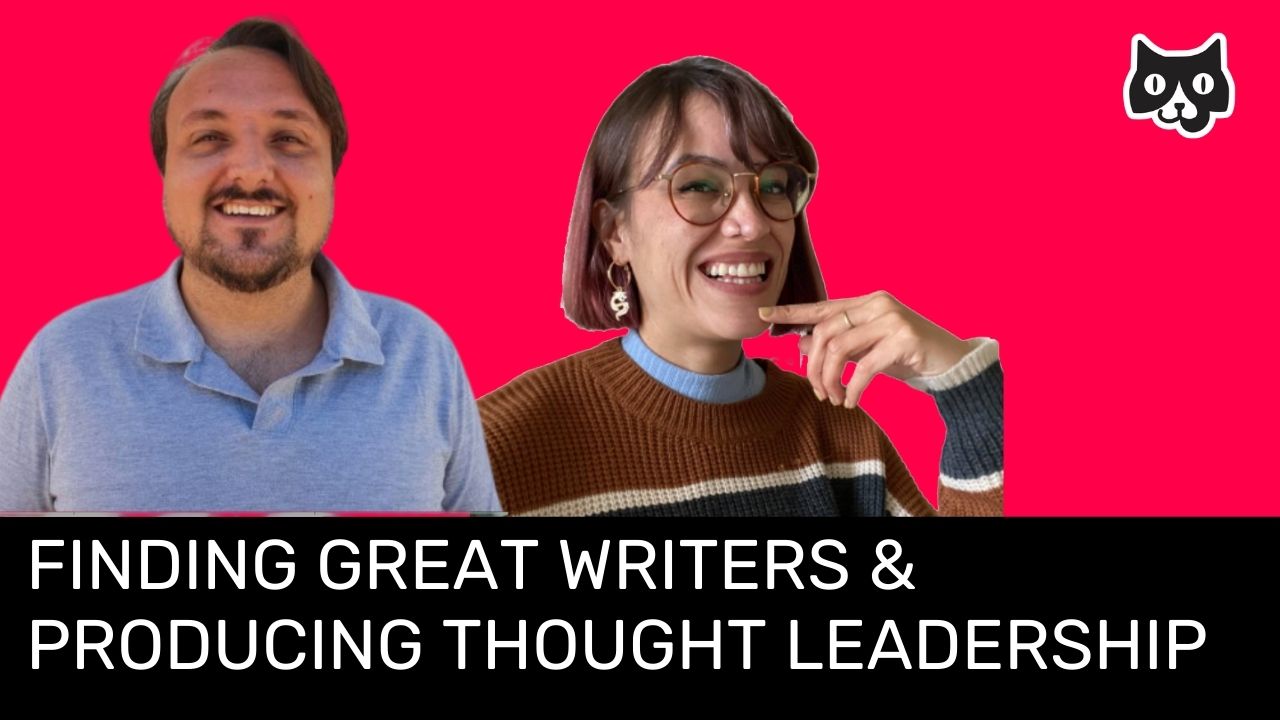In today’s episode, we’re peeling back the curtain and talking with Flying Cat Marketing’s very own Head Content Editor Robert Beames.
Rob has hired over a dozen freelance writers in the last year but had to test triple the amount to find his team of writers. With that sometimes quite painful experience in mind, he shares how he now casts his net so he gets to the creme de la creme of freelance writers without having to waste time on disappointing test pieces.
Aside from figuring out a way to filter through writer applications faster, he also shares how he chooses between decent writers with industry-specific expertise vs. amazing writers who might come from a different background.
Don’t skip this episode if you’re looking for actionable, tried and tested strategies to get your freelance or in-house writing team up to speed to deliver high-quality thought leadership content that stands out.
In this episode we talk about:
- The challenges of finding good SEO content writers
- How to find writers that reach high-quality standards
- How to choose between a writer with heavy subject matter expertise vs really great writing abilities
- Why your writers need a living TOV document
- How to best manage a team of 10-15 freelance or in-house writers
Guest profile
Robert Beames started his career studying film in university and becoming a film journalist. After moving to Barcelona he was active in sales for 5 years before wanting to move back to the written word, language, and journalism.
He’s been editing Flying Cat Marketing’s content for the past year. Apart from editing, he also makes the decisions on which freelance and in-house writers get hired and currently manages over a dozen freelance writers alongside a growing in-house editorial team.
Timestamps
00:70-3:26 Introduction
03:36-07:56 The challenges of finding good SEO content writers
07:56-11:13 How to find better writers
11:13-12:32 Subject matter expertise vs a really good writer
12:31-15:47 How to get your writers to produce thought leadership content
15:47-19:07 Why you need a living TOV document
19:07-22:58 How to manage a team of freelance content writers
22:58-27:33 Why your SEO content needs an editor
27:33-28:44 Major Takeaways
28:44-30:00 Outro
